
Roots
To truly understand the essence of our strands, particularly those adorned with the magnificent coils and textures passed down through time, we must first listen. There is a deep, resonant hum within each curl, a whisper from ancestors, a living testament to journeys spanning continents and epochs. Why is cultural hair heritage relevant in professional spaces?
The question itself beckons us not merely to a contemporary discourse on appearance but to a journey through lineage, resilience, and the very architecture of identity. The fibers that crown our heads carry not just genetic codes but the echoes of a profound collective past.
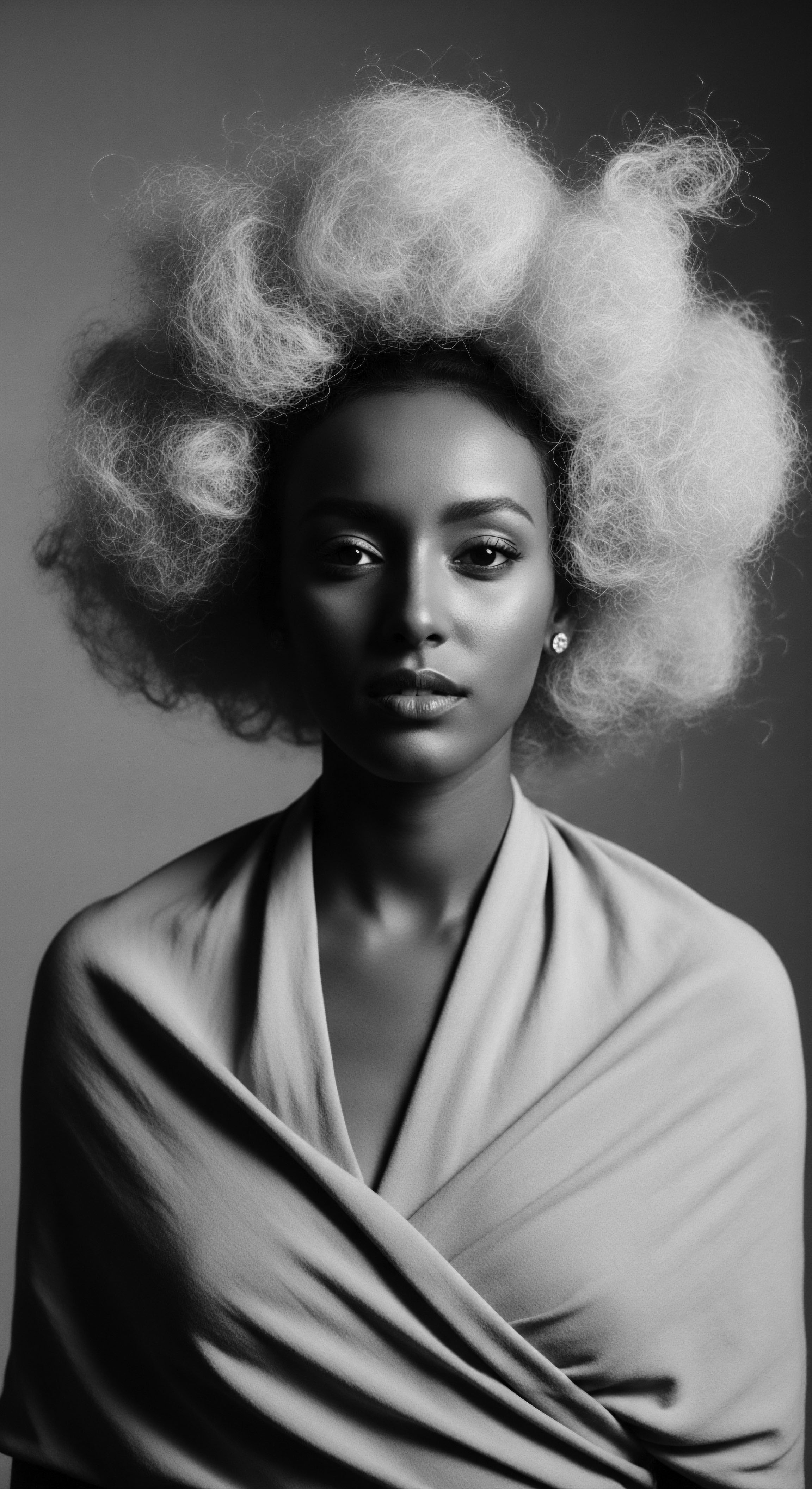
The Helix’s Ancient Whisper
The science of textured hair is, in many ways, an extension of ancient wisdom. The helical structure of a curl, its elliptical cross-section, its unique porosity and density—these are not just biological facts. They are attributes that have been understood, respected, and tended to across generations, long before the advent of microscopes or protein analyses. The curl’s innate resilience, its ability to coil and rebound, mirrors the steadfast spirit of those who wore it through trials and triumphs.
From the earliest communal gatherings to the contemporary boardroom, the innate characteristics of textured hair have quietly spoken volumes. This inherent biological blueprint, shaped by millennia of adaptation, forms the basis of unique care rituals that have been passed down, often surviving despite societal pressures to conform.
Consider, if you will, the Follicle’s Embrace of the strand, a testament to the hair’s natural inclination. Each strand’s unique growth pattern dictates its behavior, its thirst for moisture, its need for gentle handling. The tight coils, often deemed “fragile” by colonial perspectives, are in fact a marvel of natural engineering, offering intricate protection and stunning versatility. Their density provides a natural canopy, shielding the scalp from environmental elements, a characteristic honored in traditional African societies where hair was seen as a connection to the divine and a vessel of power.
The very architecture of textured hair carries ancestral stories, making its care and presentation a continuation of inherited wisdom.
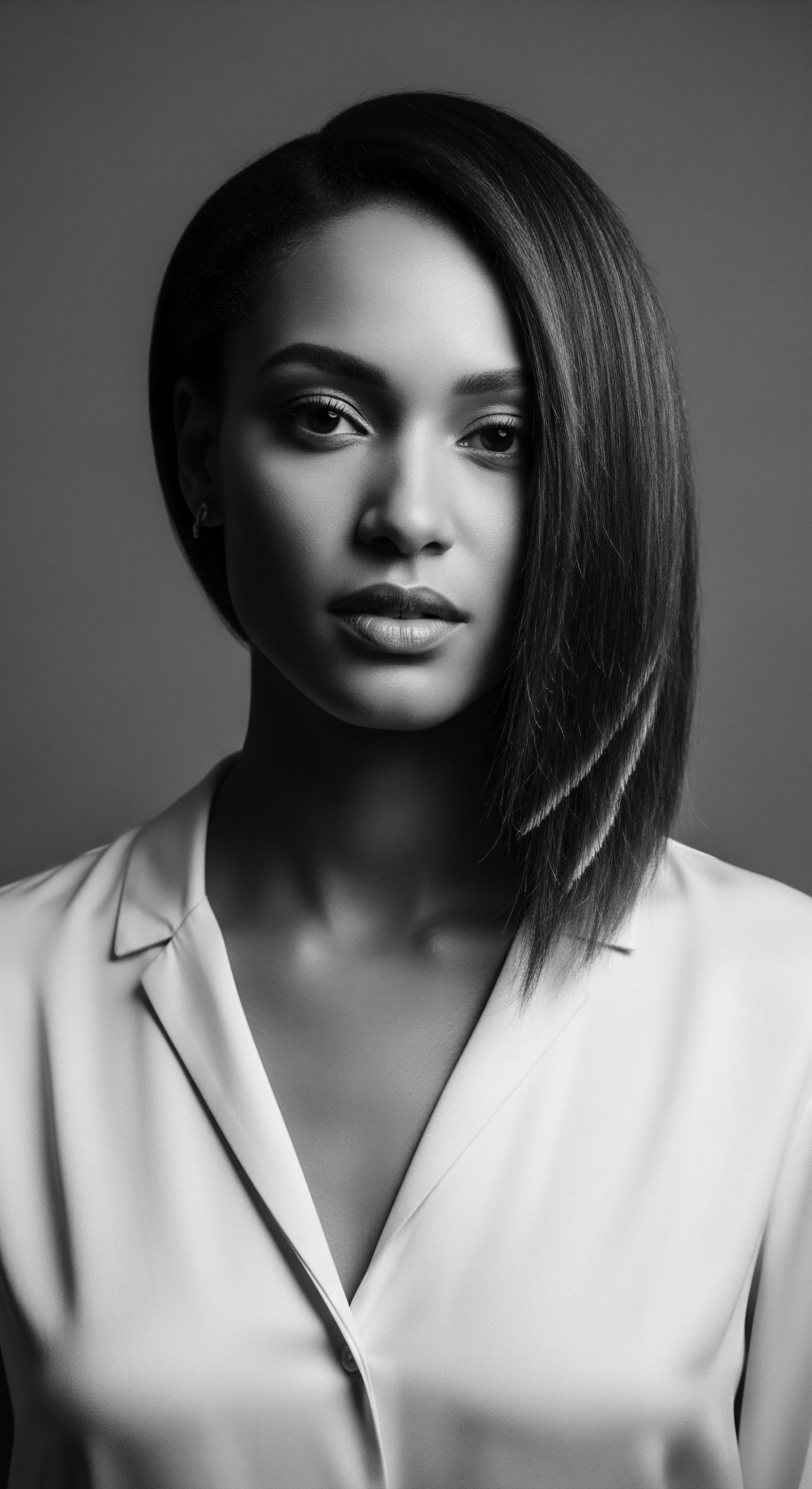
Understanding Each Strand’s Legacy
Our ways of speaking about textured hair have evolved, yet many modern classifications, while useful scientifically, sometimes miss the deep cultural context embedded in older understandings. Historically, communities did not need numbers and letters to comprehend hair. They had a language of Touch, of Observation, of Shared Practice.
Hair was described by its texture, its luster, its health, its relationship to the elements, and its place within social hierarchies or spiritual beliefs. The very names given to specific styles or hair types in various African languages speak to the intricate understanding of their properties and significance.
The language surrounding textured hair today, while expanding, still grapples with a history of mischaracterization. For generations, terms like “kinky” or “nappy” were weaponized, stripping hair of its beauty and inherent value. Reclaiming and celebrating terms that speak to the hair’s vibrant vitality, its coiled power, is an act of defiance and reverence for lineage. Understanding the hair’s journey from a biological marvel to a cultural identifier allows us to appreciate why its presence, unaltered, in professional realms is a profound act of self-authorship.
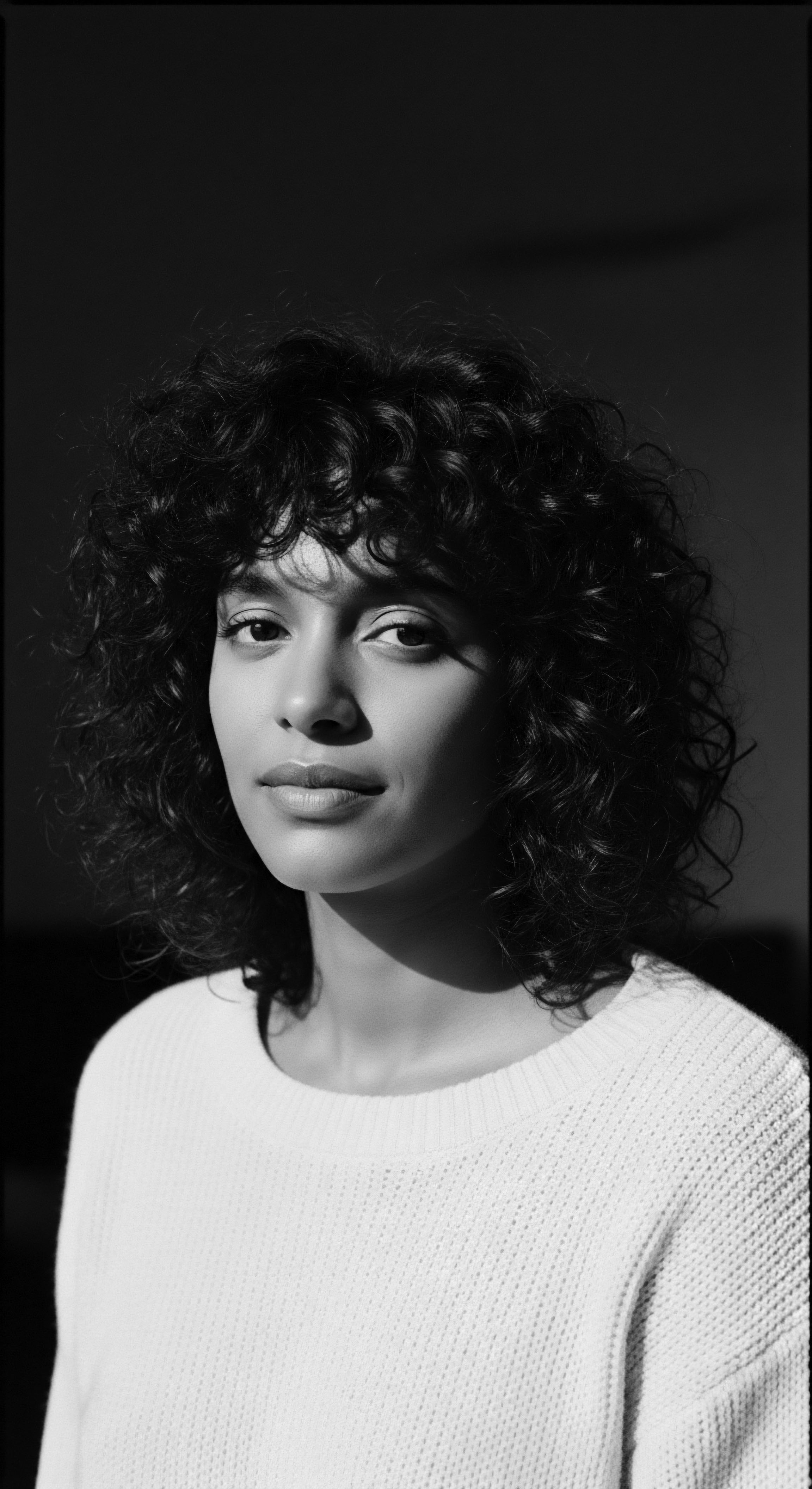
Ancestral Cartographies of Curl
How did our forebears classify the diverse range of textured hair? It wasn’t through a numerical chart, but through an intuitive, relational understanding. They observed how moisture interacted with a strand, how certain environments influenced its growth, how different ingredients sustained its vigor. This observational knowledge, honed over countless generations, informed their holistic approaches to hair care.
The Growth Cycles of hair, the shedding, the new growth, were often linked to lunar cycles or seasonal changes, viewed as part of a larger cosmic rhythm. Hair was not just an adornment; it was a living entity, mirroring the cycles of life and regeneration.
Consider the San People of Southern Africa, whose ancient rock art depicts intricate hair arrangements, hinting at deep social and spiritual meanings attached to hair. These portrayals are not mere aesthetic choices; they reflect a sophisticated understanding of hair’s natural properties and how to manipulate them for various purposes. The meticulous braiding techniques, the use of natural pigments and emollients, point to a scientific approach steeped in intimate knowledge of the hair’s fundamental needs and how to honor its distinct nature within a community context. This ancestral knowledge is a foundational piece in understanding why a person’s decision to present their textured hair in its natural state within professional settings carries such weighty historical and cultural implications.
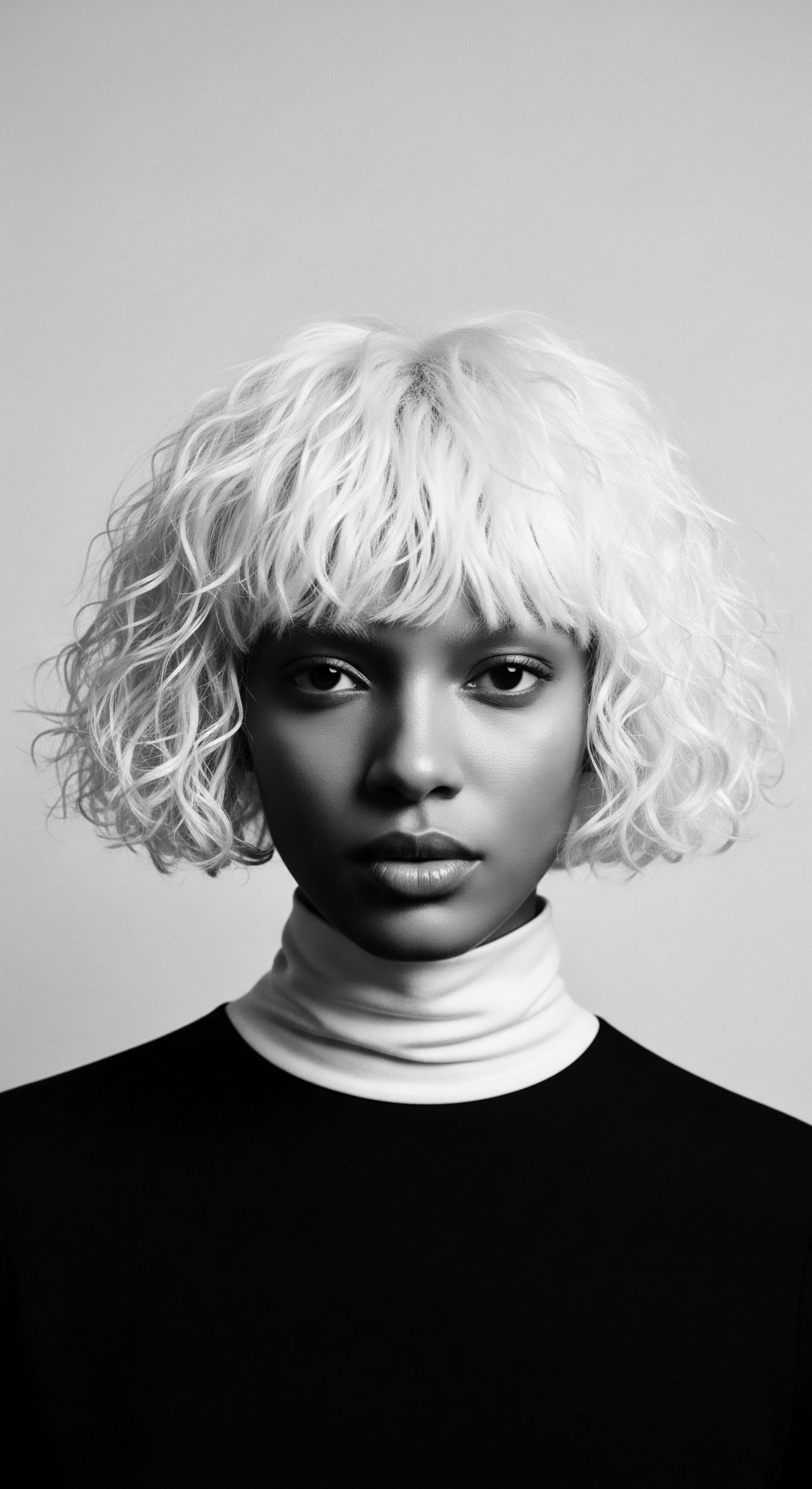
Ritual
The journey of textured hair through professional spaces is not merely about presence; it is about the living traditions that shape its presentation. Hair styling, for countless generations within Black and mixed-race communities, transcends superficial aesthetics. It is a profound ritual, a ceremony of self-care, connection, and identity. The ways we adorn, protect, and present our hair carry the weight of ancestral hands, the echoes of community gatherings, and the profound wisdom of adaptation.
Why is cultural hair heritage relevant in professional spaces? Because the very styles we wear are often direct descendants of ancient practices, each braid, each twist, each coil, a silent declaration of continuity and belonging in contexts that have historically sought to erase such markers.

Styling as Sacred Lineage
Protective styles, a cornerstone of textured hair care today, are not a modern invention. They are a continuation of ancient art forms, born from necessity and elevated to artistry. These styles, such as Braids, Cornrows, and Twists, served dual purposes for our ancestors ❉ protecting the hair from environmental damage, particularly harsh sun and dust, and communicating identity, status, marital status, or spiritual beliefs. In many West African cultures, hair braiding was a communal activity, a time for sharing stories, transferring knowledge, and strengthening bonds.
These intricate patterns, often resembling maps or symbols, conveyed messages, representing everything from a person’s family lineage to their village of origin. To wear these styles in a modern professional setting is to carry that deep, rich heritage, often silently challenging narrow definitions of “professionalism” that derive from Eurocentric beauty standards.
The historical significance of protective styles is further underscored by their role during the transatlantic slave trade. Enslaved Africans carried the knowledge of these intricate styles with them, sometimes even weaving seeds into their braids as a means of survival and resistance (Byrd and Tharps, 2014). These hairstyles became covert communication systems, maps to freedom, and enduring symbols of dignity in the face of brutal dehumanization.
The act of wearing such styles today, therefore, is an act of reclaiming that heritage, a quiet yet powerful affirmation of self in environments where historical biases persist. This is where the cultural hair heritage truly becomes relevant; it is an undeniable part of a person’s living history.
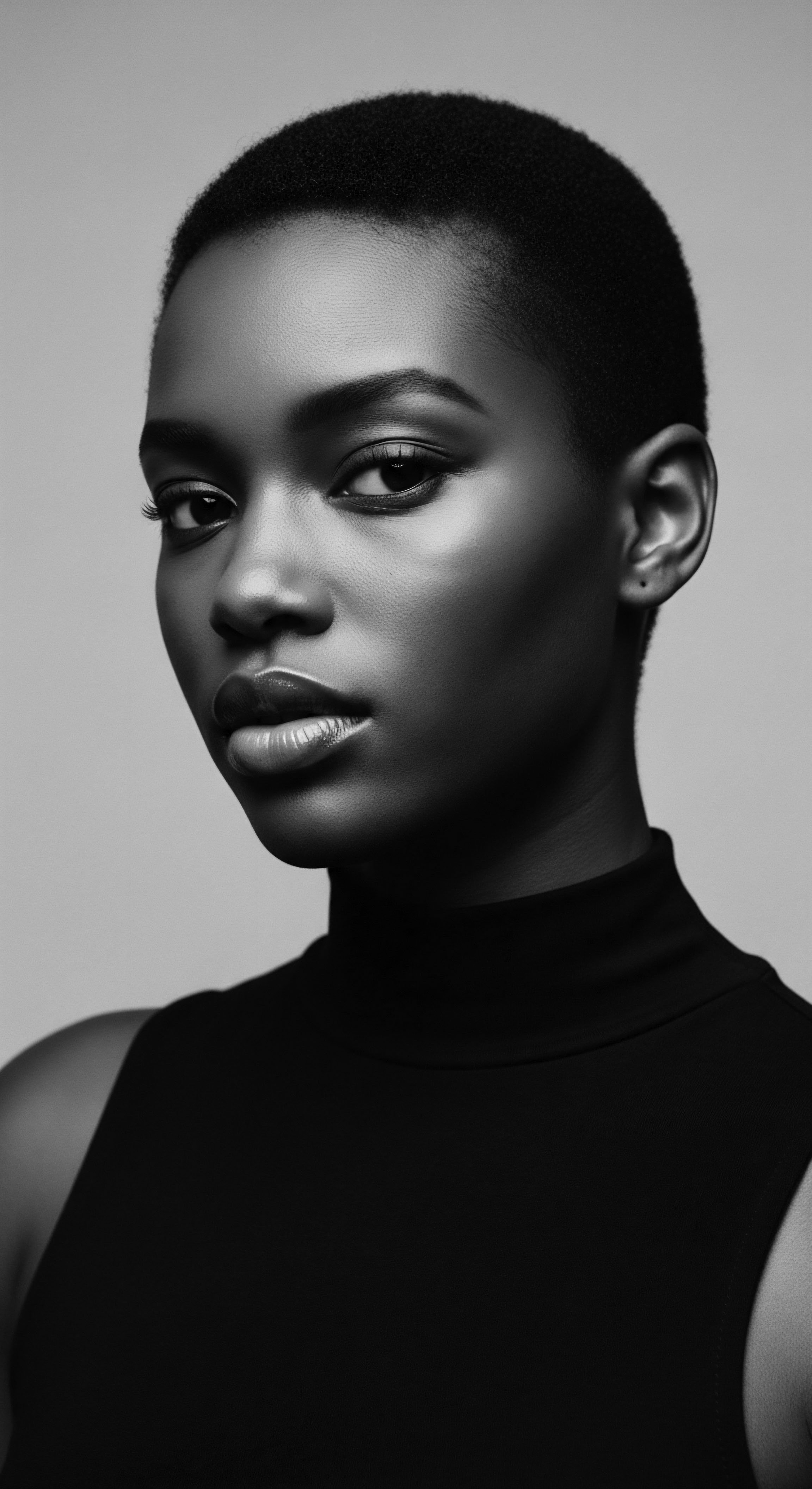
The Hands That Adorned
The tools and techniques for textured hair care also possess a profound lineage. From the meticulously carved Wooden Combs used in ancient Egypt and across various African kingdoms to the natural emollients derived from shea nuts or palm oil, ancestral ingenuity shaped the practices of hair wellness. These tools were not simply utilitarian; they were often imbued with spiritual significance, becoming extensions of the hands that practiced care.
The rituals of detangling, moisturizing, and styling were often passed down from elder to youth, cementing intergenerational bonds and transmitting essential knowledge. This profound connection between tool, technique, and community is a powerful aspect of hair heritage.
Consider the contrast between this holistic, heritage-driven approach and the often-decontextualized modern professional environment. The simple act of styling textured hair for work becomes an engagement with centuries of practice, a dialogue between past and present. When an individual chooses to wear an elaborate braided style, they are not simply choosing an aesthetic; they are choosing to honor a form of ancestral craftsmanship and cultural expression that has endured through centuries of systemic pressure to conform. This choice, often subconscious, is a powerful assertion of self and heritage within a space that may not always recognize its profound origins.
Hair styling rituals connect contemporary professionals to ancient communities, making each braid and twist a declaration of enduring cultural identity.
| Traditional Practice Cornrowing |
| Historical Significance Ancient art form in Africa, used for social status, tribal identity, and as maps for escape during slavery (Byrd and Tharps, 2014). |
| Relevance in Professional Spaces Today Asserts cultural identity and heritage; often perceived as "unprofessional" despite its rich history, highlighting discriminatory biases. |
| Traditional Practice Protective Oils/Butters |
| Historical Significance Utilized natural ingredients like shea butter, palm oil for moisture, scalp health, and shine in various African cultures. |
| Relevance in Professional Spaces Today Acknowledges ancestral wisdom in hair care; often used in natural hairstyles, which may challenge corporate grooming policies. |
| Traditional Practice Communal Styling |
| Historical Significance Hairdressing as a social ritual, fostering community bonds and knowledge transfer. |
| Relevance in Professional Spaces Today Reflects a personal connection to heritage; the time and care invested in styles can be misinterpreted or undervalued in fast-paced professional settings. |
| Traditional Practice Understanding the deep roots of textured hair practices enriches the dialogue around diversity and inclusion in professional environments. |

Beyond Adornment Protecting Heritage
The discussion of cultural hair heritage in professional spaces gains profound weight when we consider the instances where natural hair has been deemed “unprofessional” or even a barrier to employment. A stark example of this persistent bias is the case of Chastity Jones, who in 2010 had a job offer from an Alabama company rescinded after she refused to cut her dreadlocks. The 11th U.S. Circuit Court of Appeals ruled in favor of the company, stating that the company’s policy against dreadlocks was not discriminatory because dreadlocks, though culturally associated with Black people, were a mutable characteristic, not an immutable one like race (EEOC v.
Catastrophe Mgmt. Solutions, 2016). This ruling, while later challenged by legislative efforts like the CROWN Act, underscores the profound disconnect between legal interpretations and the lived experience of cultural hair heritage. For many, dreadlocks are not merely a style; they are a deeply rooted cultural expression, a spiritual path, and a direct link to ancestral practices and identity (Mercer, 2020).
This case is a potent reminder that the seemingly personal choice of hair presentation is often met with systemic barriers. When individuals of Black or mixed-race heritage choose to wear their hair in culturally affirming styles, they are often making a stand, sometimes unknowingly, against generations of prejudice. Their hair, then, becomes a symbol of their right to self-expression and cultural continuity in spaces that have historically demanded assimilation. This is why the relevance of cultural hair heritage in professional spaces is not an abstract concept; it is a tangible, often challenging, reality that impacts career trajectories and personal dignity.
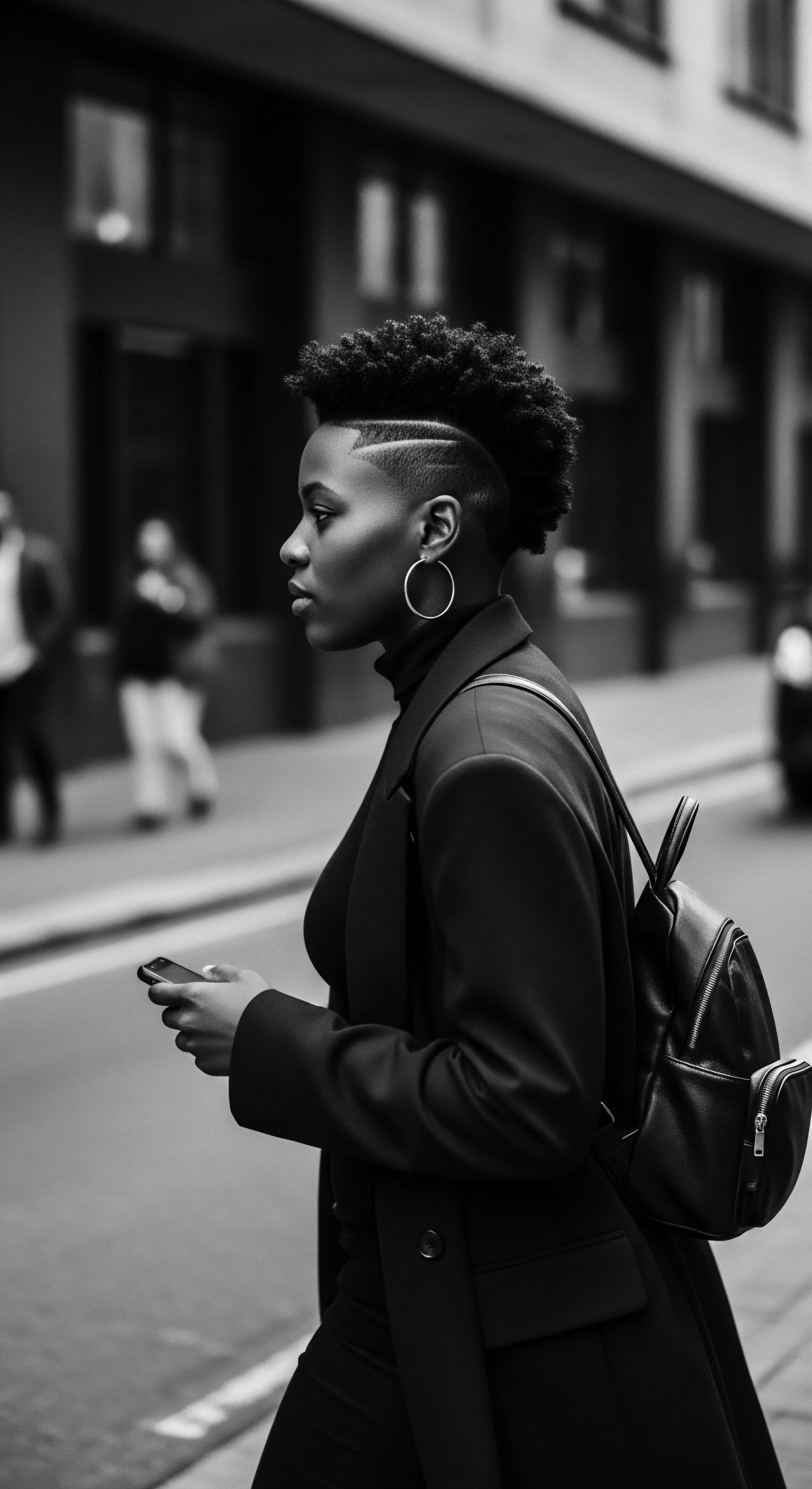
Relay
The propagation of textured hair heritage into modern professional spaces is a dynamic process, a relay race where ancestral wisdom passes the baton to contemporary understanding. It is a deep exploration that transcends surface-level aesthetics, sinking into the very fabric of identity and wellness. Why is cultural hair heritage relevant in professional spaces?
Because the practices that honor textured hair are often rooted in sophisticated holistic philosophies that govern not just external presentation but internal well-being. This ongoing dialogue between ancient practice and contemporary validation speaks to the enduring vitality of these traditions and their rightful place in every arena of human endeavor.

Nurturing the Inherited Crown
Building a personalized textured hair regimen is, in many ways, an act of ancestral reverence. While modern science offers incredible insights into the molecular structure of hair and the efficacy of various ingredients, the foundational principles of moisturizing, detangling, and protecting often echo time-honored practices. Our ancestors intuitively understood the need for gentle handling, consistent nourishment, and protection from the elements. This understanding translated into daily rituals that involved carefully selected natural oils, plant-based cleansers, and meticulous styling methods designed to minimize breakage and promote strength (Opoku, 2013).
The African Threading technique, for instance, used fine thread to stretch and straighten hair without heat, preserving its natural moisture balance—a testament to ingenuity. When we apply a rich balm or carefully segment our coils today, we are often unconsciously engaging in a continuum of care that has been passed down for centuries.
The journey from traditional wisdom to modern regimen highlights how our cultural heritage guides our choices. For instance, the deep conditioners popular today find their precursors in ancient masques made from fermented grains, clays, or herbal infusions used to strengthen and soften strands. The systematic approach to caring for textured hair—layering products, sealing in moisture, protecting ends—aligns beautifully with the cyclical nature of traditional wellness, which often prioritized sustained care over quick fixes. This interwoven knowledge base offers a comprehensive perspective on hair health, one that professional environments benefit from acknowledging and respecting, as it represents a deeply informed approach to self-care.

The Veil of Night Protecting What Lies Within
The nighttime sanctuary for textured hair, particularly the ritual of wearing a Bonnet or head wrap, is not merely a modern convenience. It is a direct continuation of ancient practices of head covering that held profound cultural, spiritual, and protective significance across numerous African societies. Head wraps, or “gele” in Yoruba culture, for example, were symbols of status, spirituality, and even mood (Gordon, 2018).
Beyond their symbolic meaning, these coverings served a practical purpose ❉ protecting delicate hairstyles from dust, preserving moisture, and maintaining intricate designs for longer periods. The smooth, breathable fabrics often used in traditional wraps minimized friction, mirroring the function of modern satin or silk bonnets.
The act of donning a bonnet before bed, therefore, is an unconscious echo of ancestral foresight. It acknowledges the inherent vulnerability of textured hair to friction and moisture loss, particularly against coarser fabrics. In a professional context, this seemingly private ritual has public implications.
A person who arrives at work with their textured hair vibrant and healthy, preserved by a nighttime routine steeped in heritage, embodies a self-care philosophy that is often undervalued. This daily practice is a quiet declaration of respect for one’s own heritage, ensuring the vitality of a culturally significant aspect of self, making its continuous relevance in professional spaces an important consideration for diversity and inclusion.
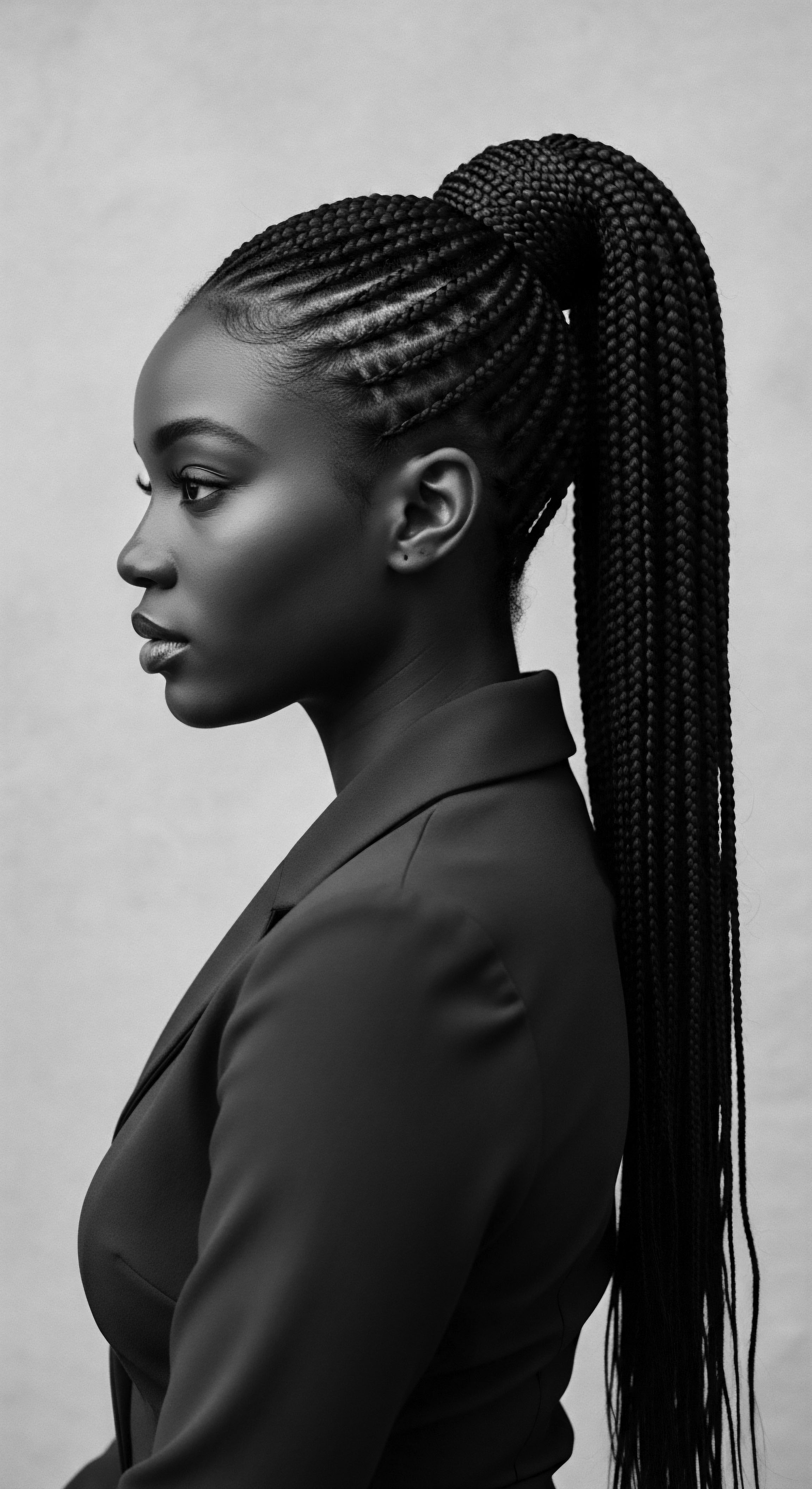
Hair Health Echoes of Generations Past
The modern scientific understanding of textured hair—its unique needs for specific lipids, humectants, and proteins—often validates the efficacy of traditional ingredients. Consider the widespread use of Shea Butter across West Africa. Scientific studies now confirm its richness in fatty acids and vitamins, proving its superior moisturizing and emollient properties (Akihisa et al. 2010).
Similarly, Black Castor Oil, a staple in many Afro-Caribbean hair care traditions, is now recognized for its ricinoleic acid content, believed to promote blood circulation to the scalp. These are not merely folk remedies; they are sophisticated natural formulations developed through generations of empirical observation.
The way traditional cultures addressed hair concerns—be it dryness, breakage, or scalp irritation—was often through a holistic lens, incorporating dietary changes, herbal remedies, and specific styling practices. For instance, postpartum hair loss, a common concern, was often managed with specific tonics derived from plants known for their fortifying properties. This comprehensive, integrated approach stands in gentle contrast to segmented modern solutions, highlighting the enduring wisdom embedded in cultural hair heritage.
The continued presence and efficacy of these heritage practices in professional settings is a statement about the enduring value of diverse knowledge systems and their capacity to offer solutions beyond conventional paradigms. When an individual brings their whole self, including their hair heritage, into a professional space, they bring with them a reservoir of historical ingenuity and resilience.
- Shea Butter ❉ A rich emollient, traditionally used across West Africa for its moisturizing and healing properties, now scientifically valued for its fatty acid profile.
- Black Castor Oil ❉ A staple in Afro-Caribbean traditions, recognized for its ricinoleic acid, which contributes to scalp health and hair strength.
- Aloe Vera ❉ Used in various African and Indigenous cultures for its soothing and hydrating properties, now known for its enzymes and polysaccharides beneficial for scalp conditioning.
- Chebe Powder ❉ Originating from Chadian women, a blend of herbs known to strengthen hair, reduce breakage, and promote length retention through traditional application methods.
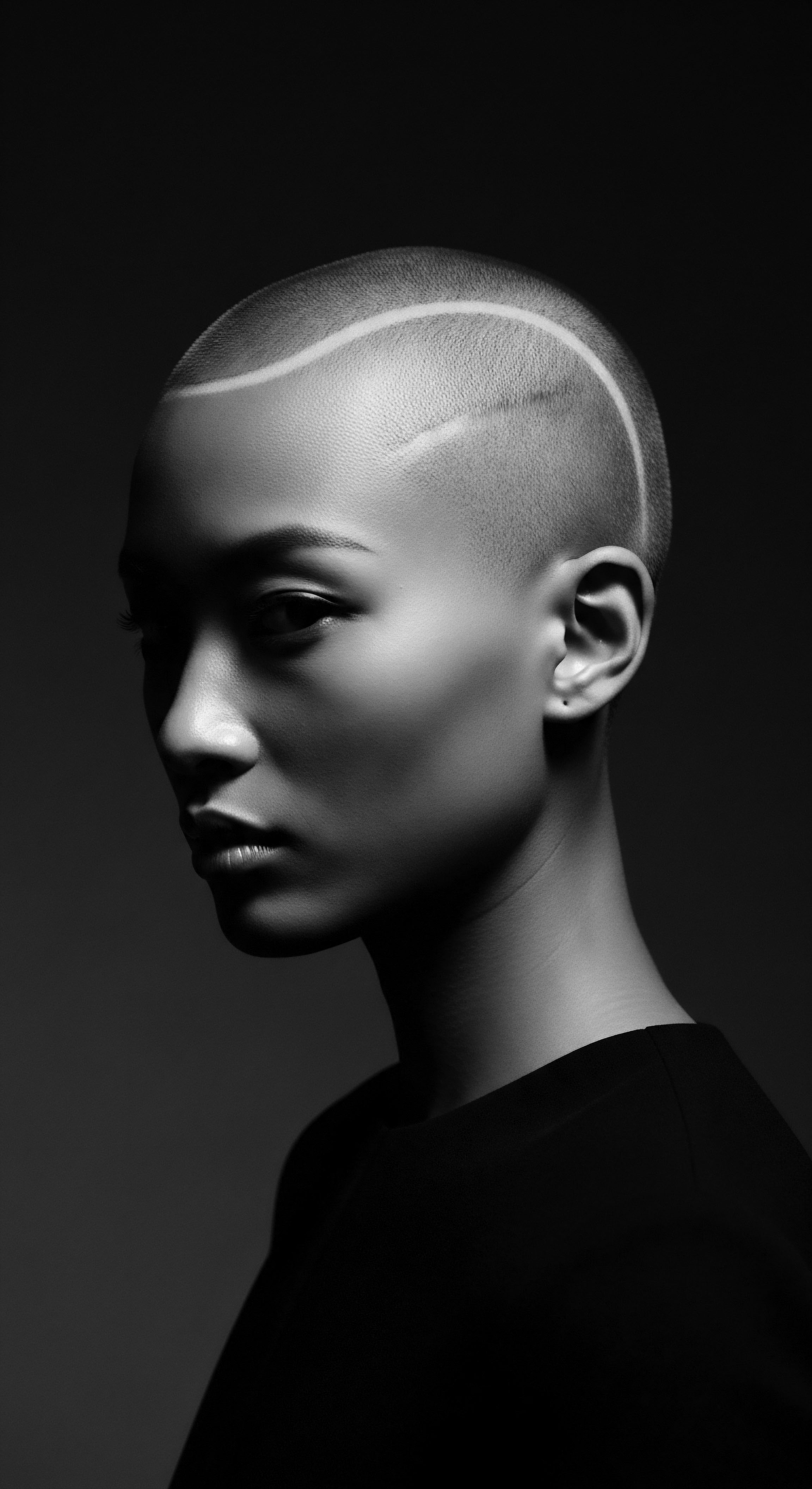
Reflection
As we close this chapter on the resonance of cultural hair heritage in professional spaces, we are reminded that a strand is never simply a strand. It is a living archive, a narrative of survival, a testament to the enduring spirit of generations. The textured coils, kinks, and waves that crown individuals of Black and mixed-race heritage carry the weight of history, the warmth of ancestral wisdom, and the undeniable imprint of identity. To acknowledge its relevance in professional spheres is to do more than simply grant permission for natural styles; it is to recognize the profound and interconnected legacy of those who wear it.
This enduring journey, from the elemental biology of the hair follicle to the intricate rituals of care and the powerful declarations of presence, culminates in a vision of spaces where all forms of heritage are not just tolerated but celebrated. The Soul of a Strand, truly understood, asks us to witness the beauty in every curve, to honor the stories woven into every braid, and to champion the right of every individual to bring their authentic, inherited self into the world, including the professional arena. For in honoring this heritage, we enrich the collective human experience, creating a more luminous and truly equitable future.
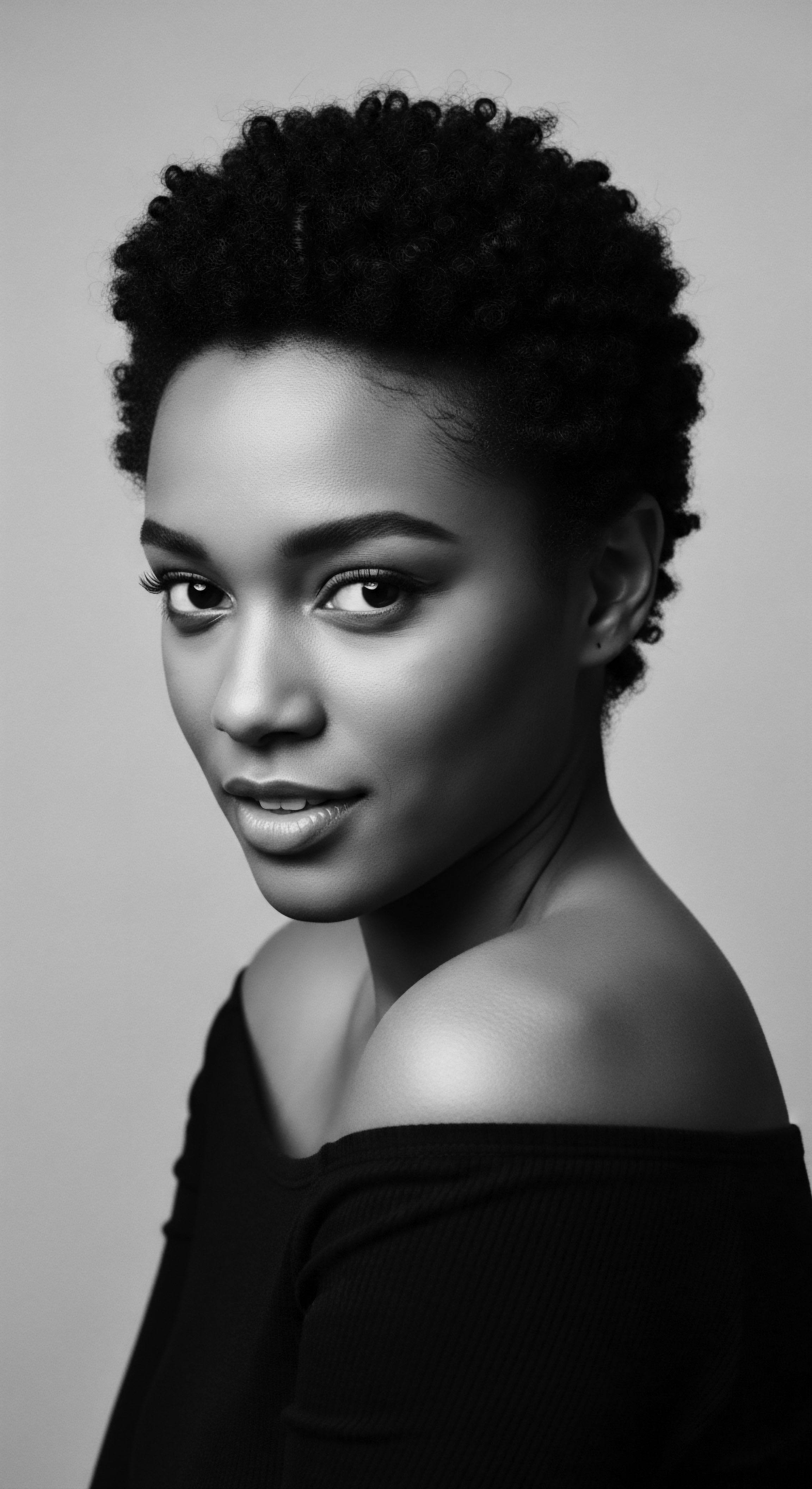
References
- Akihisa, T. Kojima, N. Kikuchi, N. Yasukawa, K. Tokuda, H. T. T. T. Lim, and M. I. I. Kimura. “Anti-inflammatory and Chemopreventive Effects of Triterpene Cinnamates and Acetates from Shea Nuts.” Journal of Oleo Science, vol. 59, no. 7, 2010, pp. 331-38.
- Byrd, A. D. and L. D. Tharps. Hair Story ❉ Untangling the Roots of Black Hair in America. St. Martin’s Griffin, 2014.
- EEOC v. Catastrophe Mgmt. Solutions, 852 F.3d 1076 (11th Cir. 2016).
- Gordon, S. The Headwrap ❉ A Cultural History of Adornment in Africa and America. Rutgers University Press, 2018.
- Mercer, M. “Dreadlocks and Identity ❉ A Sociological Perspective.” Journal of Black Studies, vol. 51, no. 1, 2020, pp. 60-75.
- Opoku, A. African Hair ❉ Its Cultural and Spiritual Significance. Africa World Press, 2013.
